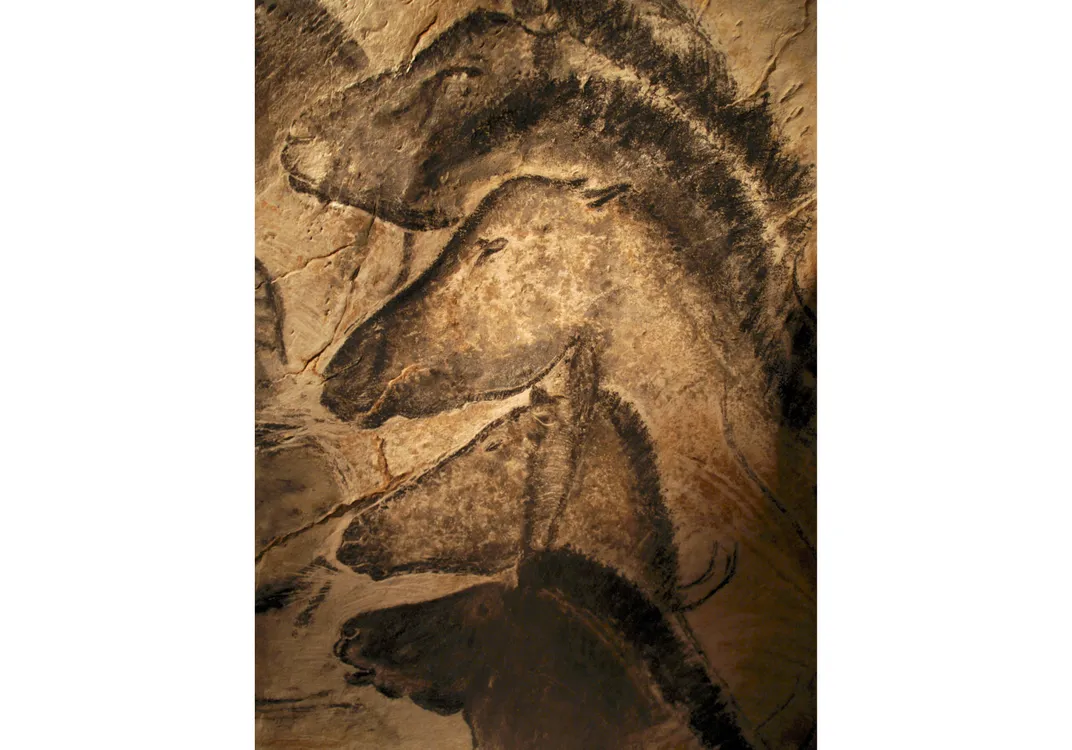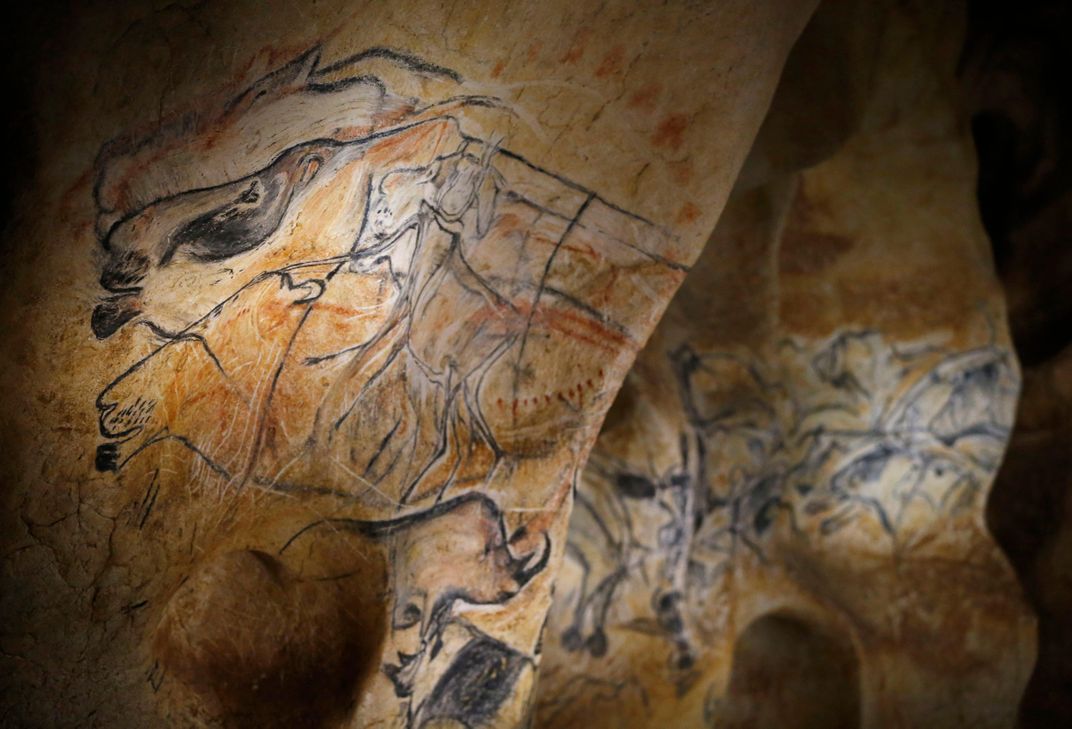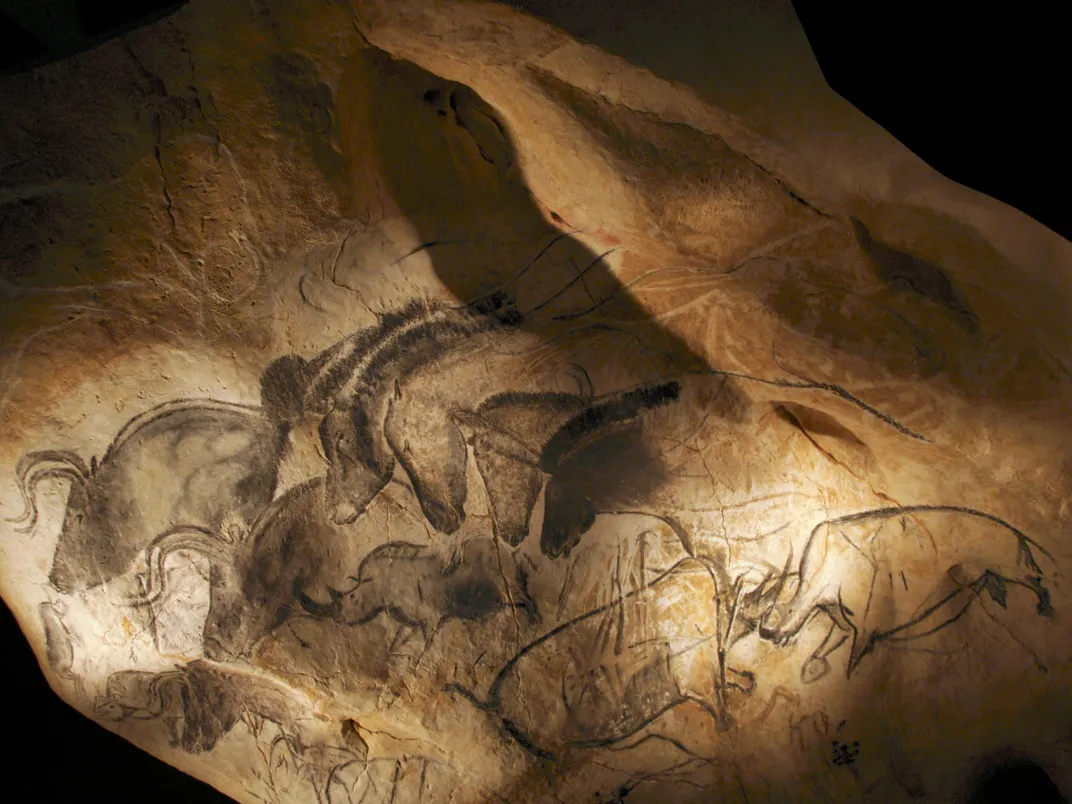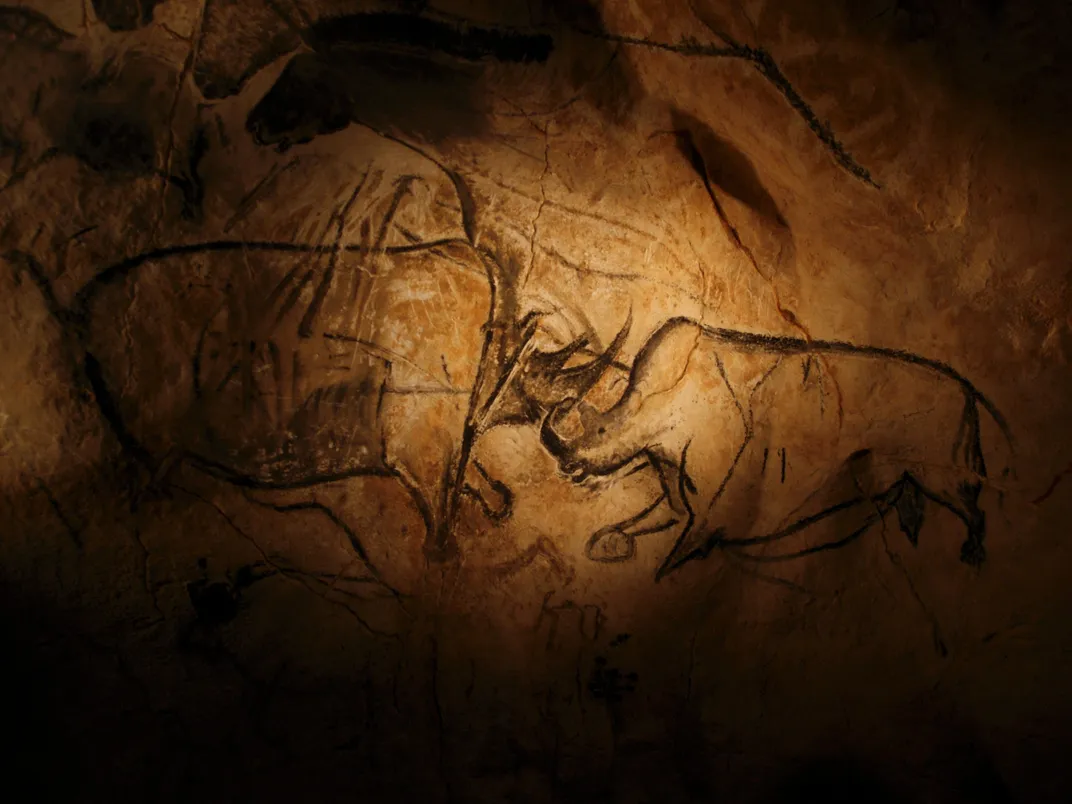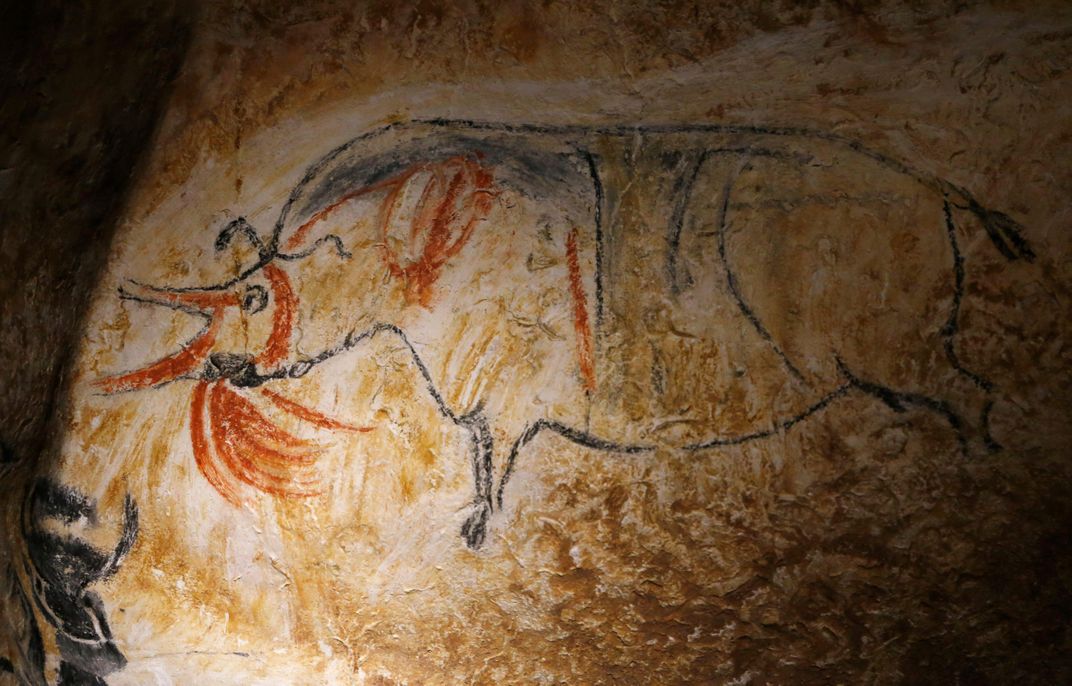New Timeline Zeros in on the Creation of the Chauvet Cave Paintings
Radiocarbon dates help reconstruct the cave’s long history
In 1994, amateur spelunkers discovered a cave near the Ardeche River in southern France that contained hundreds of handprints and black and red line drawings. The images depict ancient animals, like horses, rhinos and the now-extinct auroch. Chauvet Cave, as it has come to be called, contains the oldest known figurative art in the world.
The site has garnered much attention in recent years, being named a UNESCO World Heritage Site and featured in Werner Herzog’s documentary, Cave of Forgotten Dreams. But despite the attention, Chauvet still holds many mysteries, and a new study helps straighten out the cave’s timeline.
The study, published this week in Proceedings of the National Academy of Science, uses 259 radiocarbon dates from the rock art pigments as well as the materials showing human activity in the cave, including bones and charcoal.
Researchers previously believed that most of the paintings in the cave were created around 36,000 years ago, with a second wave roughly 5,000 years later. The new study constructs a more accurate timeline suggesting that artists worked there from 37,000 to 33,500 years ago and again from 31,000 to 28,000 years ago, writes Deborah Netburn at the Los Angeles Times.
The research suggests that though two different groups visited the site over several thousand years to produce art, neither lived in the cave. Each wave of artistry ended with a rock fall that blocked the cave from human entrance, writes Netburn.
Yet the timeline still isn't quite complete. “Only the black paintings have been dated,” Quiles tells Netburn. “The dating technique for the red paintings has yet to be developed.” So scientists don't know yet if the red paintings are as old as the black. The current dates of the charcoal drawings show that all but two are from the oldest period of occupation.
The dating also shows that cave bears, an extinct species weighing almost 900 pounds, also used the cave 48,500 to 33,300 years ago, though its unlikely they were there with the humans.
“Now, we understand that even at this time, humans were capable of creating such magnificent and elaborate artworks,” Quiles tells Léa Surugue of The International Business Times. “The drawings are full of dynamism, they reflect a real desire to transmit something to an audience.”
